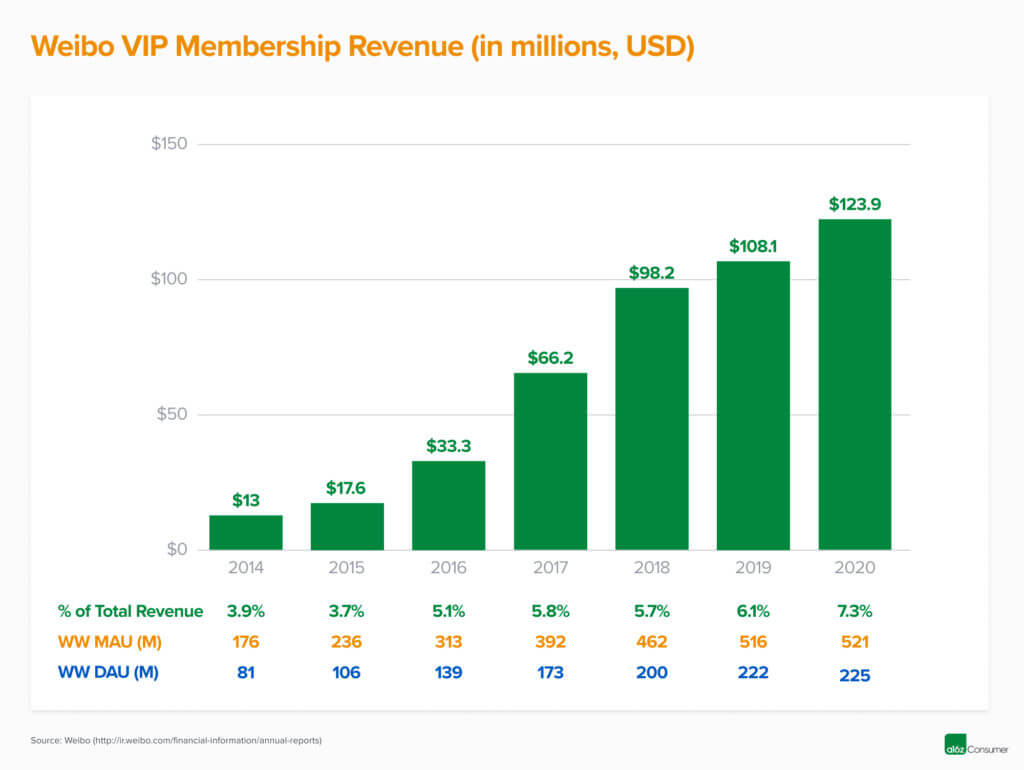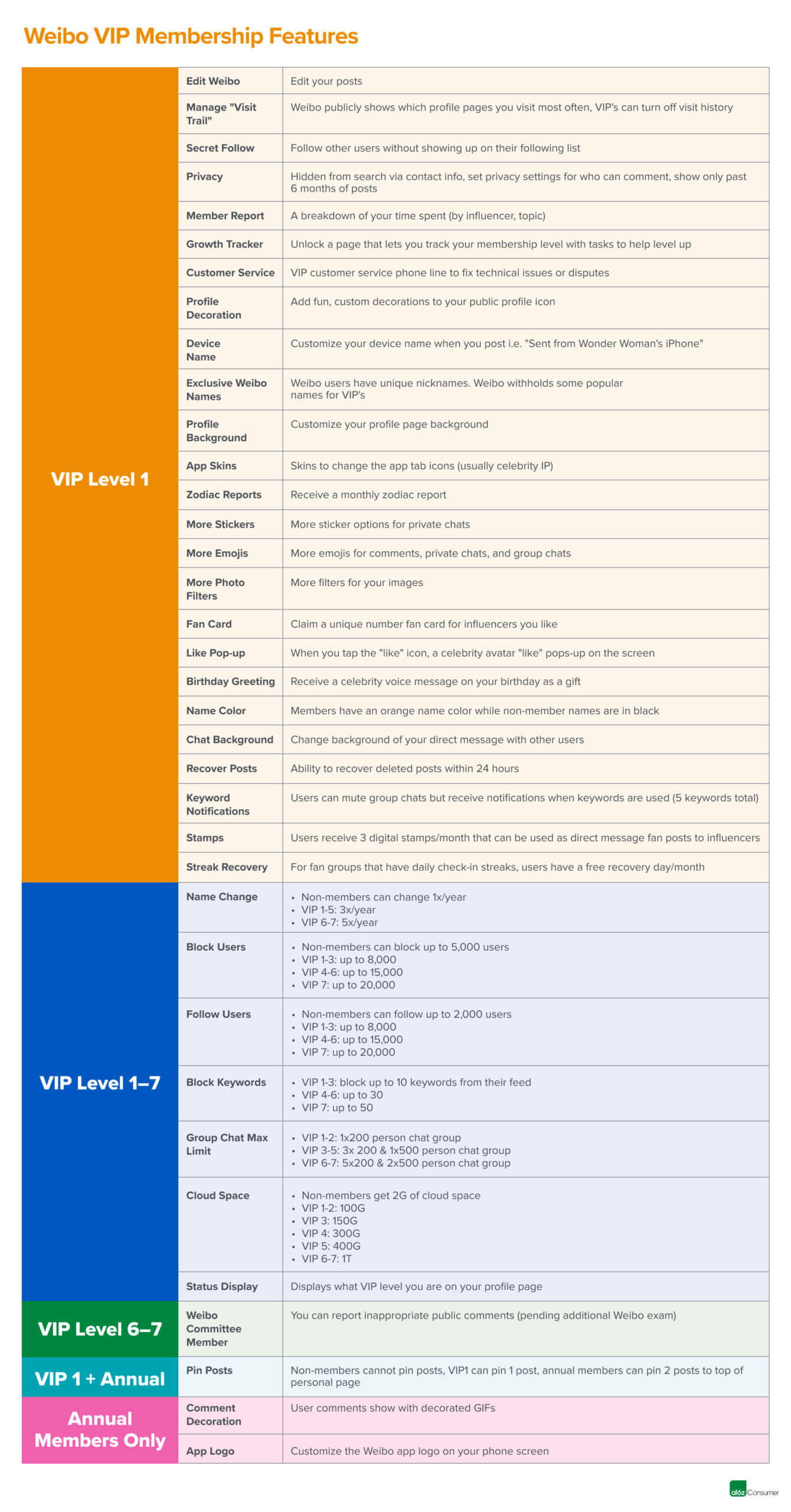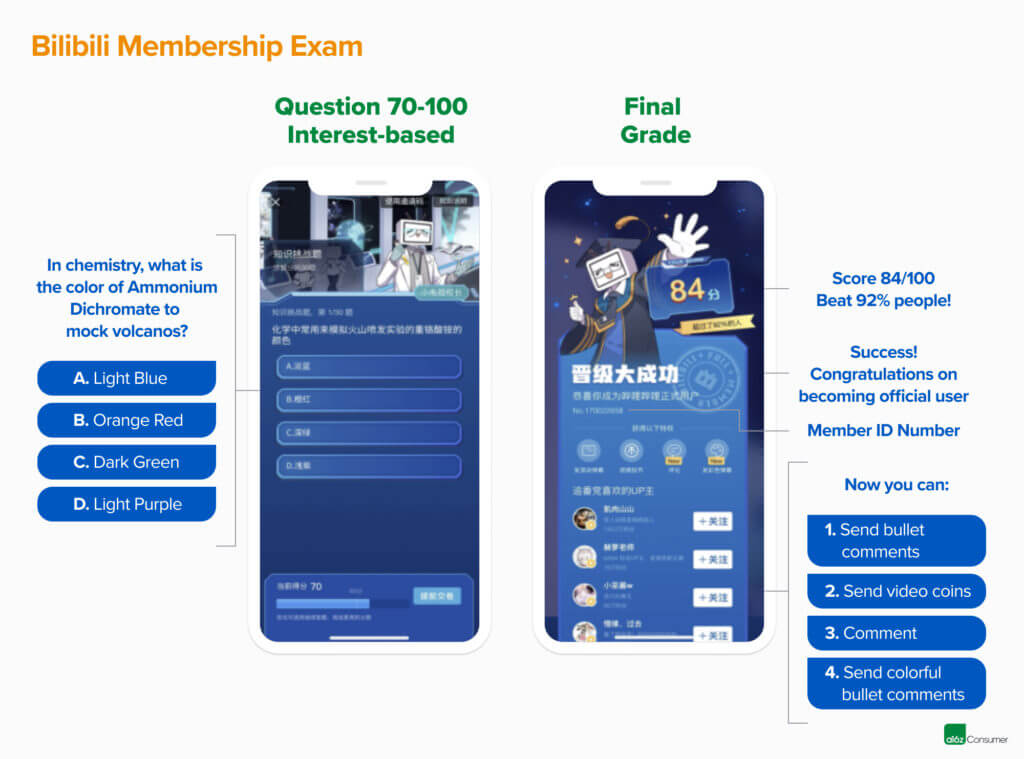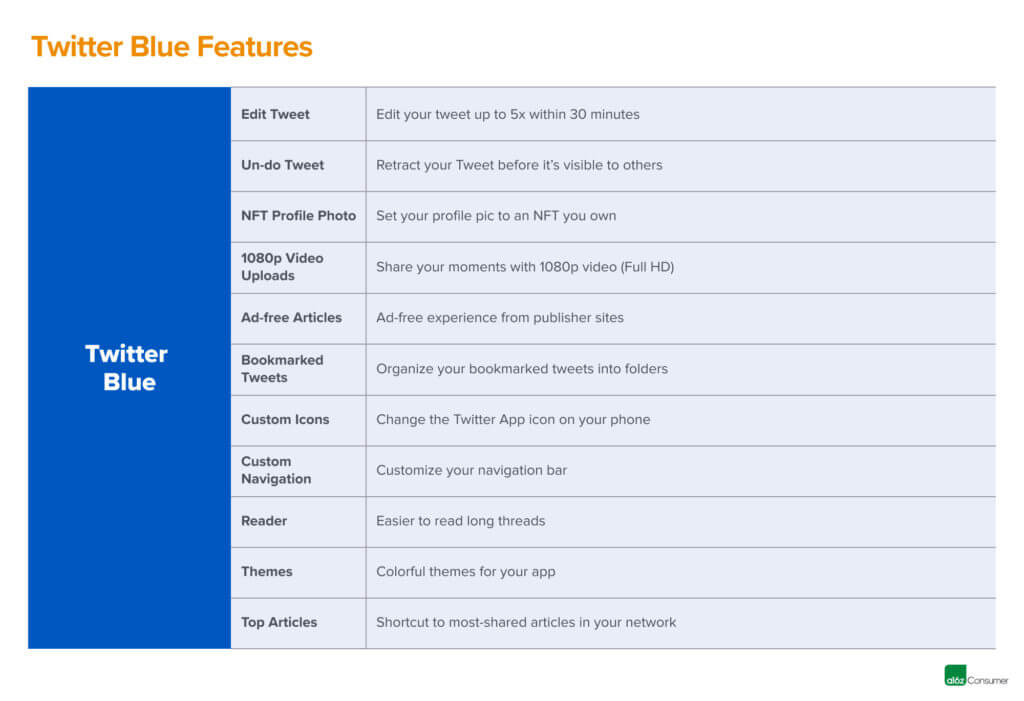Online platforms are passionately hoping that paid membership models may be a new answer to existing advertising revenue ceilings. After all, at $3-5 per member a month, the revenue is sure to add up — or does it?
Commerce companies like Amazon and Costco have been successfully charging and delighting members for decades. Now, non-commerce tech companies are all following suit. Platforms like Twitter, Snap, YouTube, Discord, and even Disney and Meta are starting to experiment with paid subscription models in the U.S., both to explore how they might boost customer and community engagement, but also as a new potential revenue stream.
China found itself in a similar situation years ago. Because China largely skipped the PC and the credit card era, its citizens were first exposed to the internet through mobile phones — and ads are a lot more annoying on a small screen. To not drive away their user base, Chinese consumer companies began experimenting with monetization techniques that downplayed ads. One such idea was the concept of VIP monthly memberships, whereby members who paid a low monthly fee — usually under $10 a month, a precedent set by Tencent’s QQ instant messenger — would get special perks.
While paid memberships represent a long-standing monetization model in China, it’s only just starting to take hold in the West. Early experimentation has been fairly basic — but showing promise. Snapchat+ has over 1 million subscribers roughly two months after launch, and Discord’s $10-a-month subscription service Nitro, which offers users perks like custom emojis and HD video streaming, has millions of subscribers, and launched a less expensive version of the service — Nitro Basic — for $3 a month in October 2022.
In this article, we’ll dive into the opportunity for paid membership programs in the West and lay out our framework for how to design a successful such program, based on our learnings from China’s social media giants. We’ll also explore the impact of paid memberships on the consumer experience.
TABLE OF CONTENTS
The opportunity in paid memberships
TABLE OF CONTENTS
Over the past five years, almost all of the biggest social media companies in China have built intricate and highly successful membership and VIP programs. Weibo (the Twitter/Instagram of China), iQIYI (the Netflix of China), Bilibili (the Gen Z Reddit/YouTube of China), and Toutiao (the top news reading app) all offer different flavors of retention tactics and rewards. The only notable exception is WeChat, which has elected not to launch such a program.
For Weibo, iQIYI, and the like, the primary value of memberships is not as a revenue stream, but as a method of customer engagement. In 2020, Weibo’s VIP membership accounted for $123 million USD in annual revenue, which was roughly only 7% of overall revenue — not a huge revenue line (see chart below), especially eight years after the program’s 2012 launch for a platform with 521M MAU. However, 84.8% of paying members used Weibo for more than 15 days per month, and VIP members posted on Weibo four times more than non-VIP members, proving the stickiness and appeal of the program.
So how do they do it?
Having studied these companies for years, we’ve observed that leading Chinese membership models have a set of common benefits that they combine and remix in different ways to create a successful paid membership framework. The four most common components are: 1) a mixture of earned and paid perks; 2) an intricate leveling and points system; 3) a balance of flexing and functionality; and 4) partnerships with other companies. In this post, we’ll explore each of these four elements and how they contribute to a membership ecosystem.
TABLE OF CONTENTS
Membership Framework #1. A mixture of earned and paid perks
Current membership models in the U.S — like with Twitter Blue or Snapchat+ — use the basic formula of pay X dollars, get Y features in return. Chinese membership models expand this with gamification. Paid memberships get you an initial baseline membership package, but additional benefits are only unlocked with increased usage. So unlike with Discord’s Nitro, where users can choose between buying a basic or premium monthly membership, Chinese models make all paying members start at Level 1 — and premium features are earned over time, for free.
For $3.50 USD a month, Weibo VIP members can edit their posts, have fun stickers next to their comments, access VIP emojis, and much much more (see chart below). But continued usage of Weibo unlocks more features such as pinning more than one post. (This also prevents a situation where you’re pitting wealthier members against those with less means.)
By offering a mix of paid and earned perks, platforms have more carrots to encourage specific user behaviors. For example, if Weibo wanted to test a new feature that would let users send each other virtual greeting cards, they could encourage this behavior by making usage of the feature a requirement for unlocking higher levels of membership. Some examples of earned perks currently available on Weibo include the ability to recover deleted posts, increased cloud storage space, or increased maximum number of users in a group chat. Earned perks make the membership less about the haves and have nots, as certain perks simply cannot be bought. This also creates a feel-good mechanism to reward the most engaged members.
Popular Gen Z platform Bilibili takes this earned concept to the extreme. Users can pay $3.50 USD a month for a VIP membership that gives them exclusive discounts, premium video content in 1080p, and more. But to unlock coveted features, like being able to post a “bullet” comment that flies across the screen from right to left during a video, users must pass a 100-question-long membership exam on a specific topic (such as gaming, anime, music, fashion, or fitness). Only those that pass the exam are deemed experts in specific fields — and worthy of posting videos and comments on that topic. Higher-level members can take their interactions to another level, posting comments that show up on different parts of the screen, in different, dazzling colors. While this feature may sound gimmicky, the test questions (as seen below) are difficult, and passing the quiz gives users a sense of accomplishment and earned credibility. Users are genuinely excited to prove they are subject-matter experts and justify why their comments deserve to be shown above everyone else’s. They’ve also earned the right for their content to stand out. This is very different from today’s Twitter, where there are plenty of people with massive followings that are not necessarily experts in their respective topics. It’s a new twist to the underlying motivation of verified accounts — this is verified expertise.
Bilibili’s membership quiz has the added benefit of being able to teach the platform’s users specific rules of engagement to foster a healthy and positive community! It does this by sprinkling specific questions about Bilibili’s members and platform rules alongside subject matter-based questions. Sample community questions include:
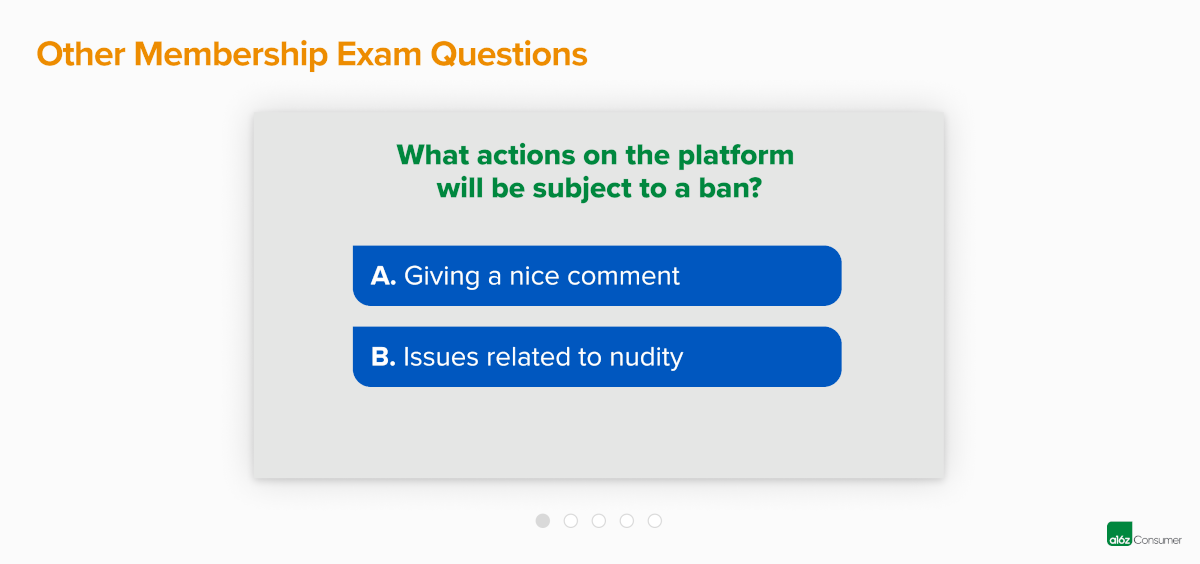
When you contrast Weibo’s VIP feature list with Twitter Blue’s, it’s exciting to imagine how much more room for innovation there is on Western platforms. We’re still in the first innings!
Membership Framework #2. An intricate leveling and points system
So we know that paying members can unlock features only if they earn their way to a higher level of membership. But how can users ascend to higher levels and the platformnomics behind membership?
Chinese companies use a leveling or points system to give users a sense of progress. This nuanced type of membership system creates a win-win between user and platform: users have fun while they earn and accumulate points to unlock more features, and platforms have a way to encourage new user behavior.
Leveling up is fun for users
Given the low monthly costs associated with these memberships, one of the goals is to just be fun — something that frequently gets lost when American companies think about their paid memberships programs. From the user’s perspective, it’s important to remember that millions of people check into social platforms every day simply because they enjoy it. Earning membership points is usually an afterthought, but it’s a nice feeling when you receive the notification that you’ve reached the next level and have a new set of features to explore. This sense of progress — of building something with value, of opening a gift of features — delights users. For Weibo, levels progress as follows: VIP 1 (150 points), VIP 2 (90,000 points), VIP 3 (270,000 points), VIP 4 (540,000 points), VIP 5 (900,000 points), VIP 6 (1,500,000 points), and VIP 7 (3,600,000 points).
Adding to the fun, some platforms let users use accumulated points to cash out for in-platform discounts and coupons — such as virtual gifts — as well as fun IRL items, like raffle tickets or free membership renewals. A Western equivalent might be if Netflix introduced a points system where users earned points for watching specific shows for certain periods of time. Those points could then be redeemed in a VIP store for show-specific merchandise — whose products are only available to users at a certain level. The possibilities are endless.
Incenting new behavior
As users enjoy the feeling of progress when they accumulate points, platforms gain new ways to incentivize users toward trying new features or cultivating a behavior. Looking at Weibo again, one particularly valuable perk is the ability to pin two posts to the top of your page (the U.S. equivalent would be the ability to pin two tweets to the top of one’s Twitter page). Because this perk is only available to users who have reached Level 3, Weibo users are incentivized to not only pay for a basic Level 1 membership, but also to do the work to level up to unlock this perk.
Leveling perks can also help push monthly subscribers to annual ones. Weibo lets users jump to Level 3 by simply choosing an annual plan instead of a monthly one. Bilibili reserves a handful of perks for annual subscribers only, such as colored usernames. By moving some perks from monthly to annual memberships, platforms can incentivize users to select annual memberships from the get go, drastically increasing the chances that acquiring that user is profitable upon first purchase.
Now that we’ve described why platforms should offer intricate leveling or points systems, here are some of the tactical ways users can accrue points on the various platforms out of China:
Membership Framework #3: A balance of flexing with functionality
When designing a membership model — specifically its perks — it’s important to consider building in a mixture of flexing (i.e., social expressions that are visible to the rest of the community) as well as functionality (i.e., utilitarian benefits). All social platforms, to an extent, encourage its members to show off their social status within the platform, and Chinese platforms are no exception, though they do try to find a good balance between the two extremes.
Visual decor
Twitter Blue’s hexagon-shaped NFT profile pictures are a perfect example of how companies can help their members’ profile photos stand out. These playful aspects of showing off are a core part of why people use social media apps like Twitter and Instagram in the first place. Chinese examples take it a step even further. Some platforms, like Weibo, encourage users to decorate or accessorize their VIP profile photos with details like horns, hats, bows, crowns — even a Santa Claus hat! (See below.) Think of these as being like “frosting” for your external profile.
There are also the internal decorations that only individual users can see, such as app skins or home screen app icons. Below are two examples of personal decorations on Weibo with two different themes: The Ling King and The Avengers.
In the Weibo feature chart above, you can see a healthy mix of flexing and utility. Some users are attracted to the VIP membership for the additional functionalities, while for others, the main attraction might be in standing out or having more avenues of self expression. This combination of flexing, and function is the underlying secret to why so many of the leveled China membership systems have mass appeal.
Flexing your earned status
On Bilibili, only VIP users who pass the membership exam are allowed to post comments. But upon gaining that ability, users who are Level 2 (after earning 200 points) are also able to have their comments show up in various colors, to help them quickly stand out. And users who are Level 3 (after earning 1,500 points) can have their comments show up in a reserved section on the screen that’s only available to VIP experts. This type of social expression serves two purposes: it helps everyday viewers quickly identify comments that are likely to be of higher value or quality, and it also helps the expert posters feel special.
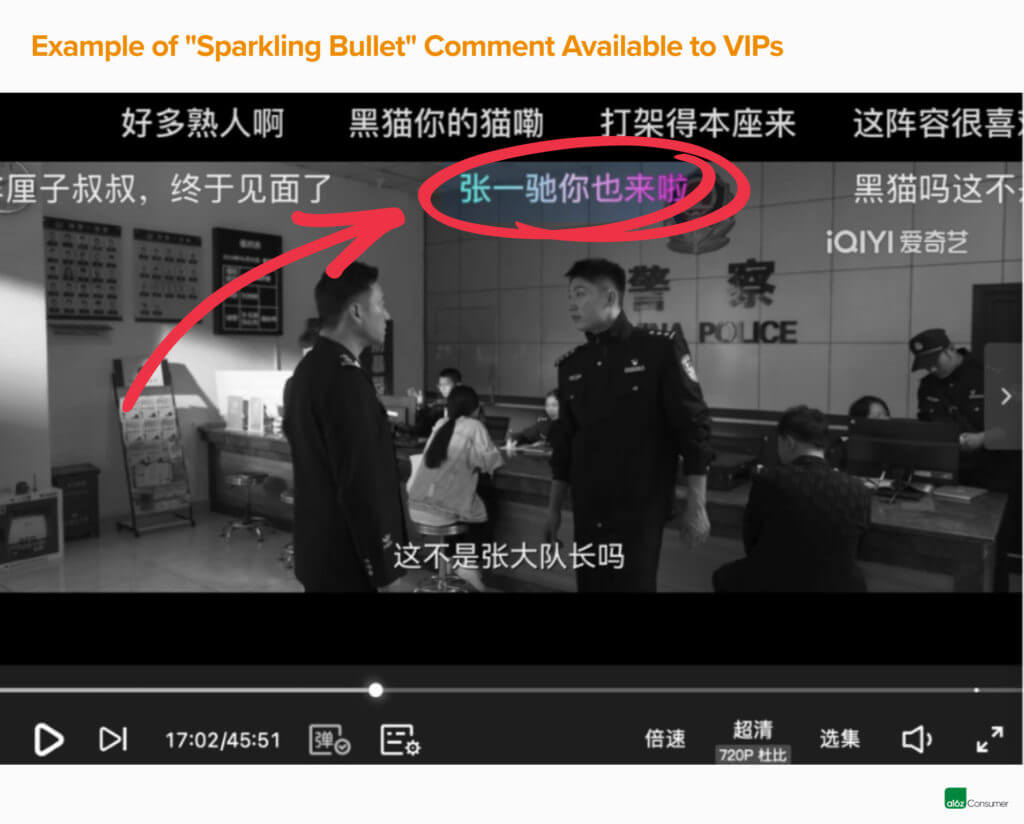 Functional utility
Functional utility
Perhaps the most obvious feature set of VIP memberships are functional utility — the ability to edit posts, user analytics, more privacy features, more colors/stickers/emojis/filters, etc. But when it comes to utility features, it’s helpful to think about influencer and content creator needs as well. Two particularly powerful utility features for creators on Weibo are the ability to pin more than one post and the ability to “ghost follow” other members anonymously. Pinning more than one post is especially helpful for content creators that need to promote multiple things (e.g., a newly released book and a music video). And the ability to follow someone anonymously lets influencers follow their real-life friends privately without fans causing a disturbance in their personal lives (i.e., no more need for a fake account).
As another utility example, paying VIP members of iQIYI get access to new series upon release while non-members have to wait 14 days. Additionally, those early access series are presented with higher-quality images (4K) and sound (Dolby audio). They also have access to offline celebrity events and dedicated customer service.
TABLE OF CONTENTS
Membership Framework #4. Partnerships with other companies
In China, many of the major social media companies do cross-partnerships with non-competitive companies to increase their customer base. It’s an online exchange that benefits both parties, and would be the equivalent of Twitter Blue offering its members a free Spotify membership as a perk. This sort of partnership between online companies has not yet become widespread in the U.S.; the closest equivalents are offline museum reciprocity programs, where membership in one museum grants you free access to a select list of other museums around the country.
Among the many cross-partnerships between social media companies in China, Weibo offers among the most creative collaborations. Weibo VIP members who subscribe to the service for more than three months automatically get a one-month trial of VIP access to Youku or QQ Music. Or, if they pay an extra $2 per month, they can get a discounted combined monthly membership to Youku or QQ Music.
As another example, iQIYI offers a co-branded digital membership card with the online retailer JD.com for $35 a year. Seeing as an annual subscription to iQIYI is $30 and an annual subscription to JD.com is $40, users save over 50% when buying both together! This would be the equivalent of Netflix having a bundle membership with Amazon Prime, with a built-in discount. The co-branded memberships are a bundle deal, meaning that users can now get two services for the price of one; users also can’t cancel just one service, as both are part of the deal. iQIYI also has a bundled package with Starbucks that includes free coffee delivery and drink upgrades, which can result in a 30% savings.
Conclusion
The roots for monthly membership programs in China are deep, as QQ Messenger introduced and mass popularized the concept to netizens well over a decade and a half ago. As more Western companies seek out non-advertising revenue models, paid memberships will increasingly be top of mind for social media companies, entertainment companies, ecommerce, and even physical retail. As a fun example, even Kentucky Fried Chicken has a very popular monthly paid membership program in China where $4 a month gets you 40% off breakfast bundles, deeply discounted coffee ($0.21 for a large cup), and free daily delivery on orders over $5.40. The members’ discounts help make trips to KFC a regular daily habit. And of course KFC China doesn’t miss a great opportunity for cobranding. With this Minion “membership card,” members are eligible for daily ticket giveaways to Beijing Universal Studios.
 Chinese platforms have been experimenting with paid membership models for over a decade and offer new frameworks for the West to consider. They are also a great source of ideas for individual features that are universal. Each of the four frameworks we discuss above are relevant to the U.S.: a mix of paid and earned, leveling, expression and utility, and distribution partnerships. The gamification of what it means to be a member is not just a new revenue stream; more importantly, it’s a way to deepen engagement with existing users and turn average users into super users.
Chinese platforms have been experimenting with paid membership models for over a decade and offer new frameworks for the West to consider. They are also a great source of ideas for individual features that are universal. Each of the four frameworks we discuss above are relevant to the U.S.: a mix of paid and earned, leveling, expression and utility, and distribution partnerships. The gamification of what it means to be a member is not just a new revenue stream; more importantly, it’s a way to deepen engagement with existing users and turn average users into super users.
Additional reporting by Avery Segal and Apple Liu.

